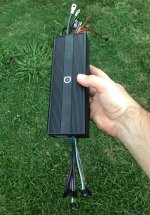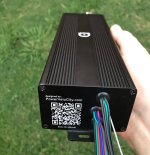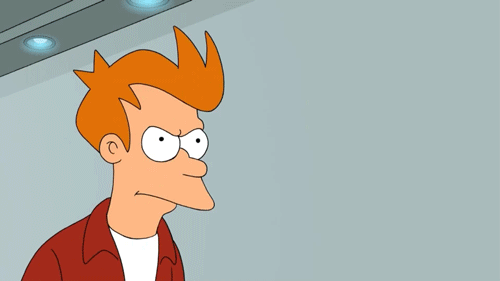You are using an out of date browser. It may not display this or other websites correctly.
You should upgrade or use an alternative browser.
You should upgrade or use an alternative browser.
PV NextGen FOC 100-180v 36kw max - $799
- Thread starter Powervelocity.com
- Start date
If you already are doing everything custom, could you please include BMS function with active balancing.
And I don't know how much space it would take, but could You include 220V AC 16A charging (max for Schuko outlet)
Including everything you need for an electric vehicle would make it massively space efficient. And also monitoring and programming everything in a single app. This would actually be worth the premium IMHO.
And I don't know how much space it would take, but could You include 220V AC 16A charging (max for Schuko outlet)
Including everything you need for an electric vehicle would make it massively space efficient. And also monitoring and programming everything in a single app. This would actually be worth the premium IMHO.
Powervelocity.com
100 kW
You could check this thread or the website for now.
HCx said:Will subscribing to your newsletter on your site notify us when preorders are available or what is the best way to be notified beyond checking this thread every few days?
MileHighGuy
10 mW
- Joined
- Nov 21, 2017
- Messages
- 21
Will these be available any time soon for purchase? What is the wait times if preordered?
Powervelocity.com
100 kW
AC charger inside the controller would take as much space (and weight) as the controller itself if done right. It has to be isolated design for safety. You may also not want to carry the charger on the vehicle all the time.
With that said, there are already great power supplies like Flatpacks S 1800w that can be used as the DC source. Small, light, 96% efficient, wide voltage input range all the way up to 250v and output up to 33A at 53V. It's hard to make anything better than that. I use 2 of them in series and that allows me to fast charge my battery in no time.
Programming, monitoring is already in the controller. Charge cycles can be turned on and off, scheduled, etc., voltage and current are adjusted by the controller regardless of what DC source is used. The only requirement is that the DC source voltage is the same or lower than the battery target charging voltage.
With that said, there are already great power supplies like Flatpacks S 1800w that can be used as the DC source. Small, light, 96% efficient, wide voltage input range all the way up to 250v and output up to 33A at 53V. It's hard to make anything better than that. I use 2 of them in series and that allows me to fast charge my battery in no time.
Programming, monitoring is already in the controller. Charge cycles can be turned on and off, scheduled, etc., voltage and current are adjusted by the controller regardless of what DC source is used. The only requirement is that the DC source voltage is the same or lower than the battery target charging voltage.
bushido said:If you already are doing everything custom, could you please include BMS function with active balancing.
And I don't know how much space it would take, but could You include 220V AC 16A charging (max for Schuko outlet)
Including everything you need for an electric vehicle would make it massively space efficient. And also monitoring and programming everything in a single app. This would actually be worth the premium IMHO.
999zip999
100 TW
pM sent
Powervelocity.com
100 kW
Demo of the charge mode on the NextGen controller. Use any DC source lower than your battery max voltage.
Fully automated. Just plug in the charger and it will start charging. No need to press buttons, etc.
[youtube]F64T9DeuCGA[/youtube]
Fully automated. Just plug in the charger and it will start charging. No need to press buttons, etc.
[youtube]F64T9DeuCGA[/youtube]
Powervelocity.com
100 kW
Powervelocity.com
100 kW
Yes, CC and CV modes are supported. As well as gradual ramp up. Any PSU with a voltage lower than the target battery voltage will work. The input current limit and the battery charging current can be configured.
Eventually, the firmware will get more sophisticated to allow setting up charging schedules. For example, get full charge by a certain time, etc.
Cutting off input naturally happens when you disconnect the PSU from the controller. The controller drive function is disabled while any voltage higher than 11v is detected on any phase.
Eventually, the firmware will get more sophisticated to allow setting up charging schedules. For example, get full charge by a certain time, etc.
Cutting off input naturally happens when you disconnect the PSU from the controller. The controller drive function is disabled while any voltage higher than 11v is detected on any phase.
john61ct said:sweet looking!
the builtin charging handles the termination at full right?
so a dumb PSU will do for input?
Suggestion, allow control of an external relay to isolate source's input upstream rather than just cutting off its output.
Excellent.
You are referring to the input to the controller, which is the output from the charge source.
I am suggesting enabling a relay to cut off the AC input to the **PSU** (or DC if using an alternator, solar controller, DCDC charger or converter)Powervelocity.com said:Cutting off input naturally happens when you disconnect the PSU from the controller.
john61ct said:Suggestion, allow control of an external relay to isolate source's input upstream rather than just cutting off its output.
You are referring to the input to the controller, which is the output from the charge source.
Powervelocity.com
100 kW
The size is now 51 x 78 x 225 mm or 2'' x 3'' x 8'' 7/8.
The main reason why phases and battery connections are wired on one side and signaling/inputs are on the other side is to minimize noise injection into the control circuits. You want to keep the high voltage and high current wiring away from your control signals to ensure reliability of the system. Lower power controllers can be forgiving in that respect so they bundle all wires on one side but even on those controllers it's not a good practice.
A side benefit of wiring on both sides is that this makes it easier to install it on bikes where controllers are often mounted under the frame. So inputs are closer to their connections and phases are closer to the motor.

The main reason why phases and battery connections are wired on one side and signaling/inputs are on the other side is to minimize noise injection into the control circuits. You want to keep the high voltage and high current wiring away from your control signals to ensure reliability of the system. Lower power controllers can be forgiving in that respect so they bundle all wires on one side but even on those controllers it's not a good practice.
A side benefit of wiring on both sides is that this makes it easier to install it on bikes where controllers are often mounted under the frame. So inputs are closer to their connections and phases are closer to the motor.

Dartman said:New controller housing size? Why wires coming out from both ends?
j bjork
100 kW
How watertight is it? I always try to avoid wires going up, to avoid the risk that water can follow the wires in to the device.
Powervelocity.com
100 kW
All holes have rubber grommets in them. Phase and battery wire holes are very tight and technically water proof. If mounted the way I showed above, that's where I would expect water and dirt to hit the controller the most.
The other holes are tight enough for most situations. However, if the controller is expected to be submerged under water, a few drops of silicon can make it waterproof. I'll likely make waterproofing an option if there is enough need.
The other holes are tight enough for most situations. However, if the controller is expected to be submerged under water, a few drops of silicon can make it waterproof. I'll likely make waterproofing an option if there is enough need.
j bjork said:How watertight is it? I always try to avoid wires going up, to avoid the risk that water can follow the wires in to the device.
j bjork
100 kW
Yes, I am not so worried about the holes with one wire. In those places the rubber grommets probably work well. And they are facing down. But the ones facing up with several wires I worry are more of a problem. Maybe I am just to careful with those things, and it is not a problem.
Powervelocity.com
100 kW
If you are planning to ride in a rain or there is a chance the bike can go under water, you should worry about those things.
The holes with multiple wires, however, are pretty tight as well but, for complete peace of mind, can be easily sealed with silicon.
The holes with multiple wires, however, are pretty tight as well but, for complete peace of mind, can be easily sealed with silicon.
j bjork said:Yes, I am not so worried about the holes with one wire. In those places the rubber grommets probably work well. And they are facing down. But the ones facing up with several wires I worry are more of a problem. Maybe I am just to careful with those things, and it is not a problem.
Powervelocity.com
100 kW
Pre-orders will reopen soon. Please check back on the website in about a week.
Hertzelz said:Hi, I've sent you an email about ordering but got no response.
How can I order?
Powervelocity.com
100 kW
Free juice from the the sun!
[youtube]jtmIfhdXWeU[/youtube]
[youtube]jtmIfhdXWeU[/youtube]
Hertzelz
1 W
- Joined
- Jun 3, 2015
- Messages
- 50
Powervelocity.com said:Pre-orders will reopen soon. Please check back on the website in about a week.
Hertzelz said:Hi, I've sent you an email about ordering but got no response.
How can I order?
Any update?
TorgueRPM
100 W
You mention being able to connect controllers via CAN, do you think there would be any issues running a dual 3-phase/6-phase motor like a hubmonster using two controllers connected by CAN?
parabellum
1 MW
Are there plans for this controller running ACIM algorithms and taking sine cosine resolver or encoder input?
Powervelocity.com
100 kW
In theory, it should work. Over CAN, the motors are synced with understanding that they are on different axles with ability to control traction. I think it would be best, however, to implement the exact logic that would be needed to keep two pairs of phases in a single motor in sync.
TorgueRPM said:You mention being able to connect controllers via CAN, do you think there would be any issues running a dual 3-phase/6-phase motor like a hubmonster using two controllers connected by CAN?
Similar threads
- Replies
- 1
- Views
- 757
- Replies
- 3
- Views
- 712
- Replies
- 37
- Views
- 3,186





